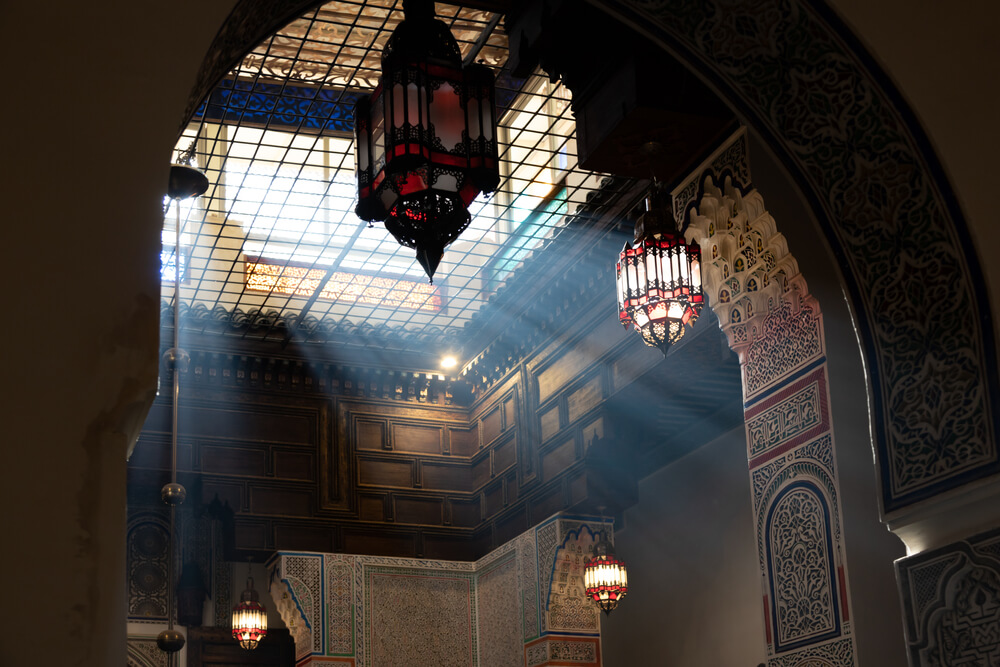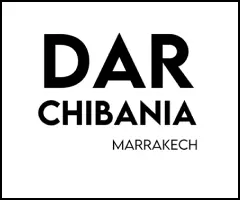Riads in popular culture: between tradition and modernity

Discover riads, treasures of traditional Moroccan architecture, and learn more about their place in popular culture, their history and their unique features. The interior gardens, the typical habitat and the fascinating charm of riads are all elements that make these houses a real passion for lovers of architectural heritage.
A symbol of traditional Moroccan architecture
Considered the quintessential example of traditional Moroccan living, riads are private homes generally built around a central patio with an enclosed garden. They are a perfect reflection of the country's aestheticism and ancestral know-how in terms of architecture and urban planning, and seduce visitors with their uncommon charm and uniqueness.
Distant origins
The etymology of the word "riad" comes from the Arabic "رياض" (ryad), meaning garden. The first riads date back to Islamic times and have evolved over the centuries to become what they are today. Examples of riads can be found dating as far back as the Almoravid dynasty (11th-12th centuries) to the French colonial period.
Characteristic spatial organization
The spatial organization of riads follows a traditional layout, with the garden at the heart of the house. The main rooms and bedrooms open onto the garden, while the more functional elements, such as the kitchen and bathrooms, are generally located on the periphery. In this way, daily life revolves around the central patio and its garden, a real space for conviviality and a place to relax and cool off in summer.
Riads in popular culture: places for exchange and sharing
Beyond their architectural beauty, riads are also perceived as symbols of Moroccan popular culture, and are true places for exchange and sharing between inhabitants. Historians even believe that the social system built around riads helped strengthen the community ties and values of solidarity that prevailed in Moroccan towns in the past.
Living spaces in the heart of the medinas
Even today, riads are still to be found in medinas (old towns) such as Marrakech, Fez or Essaouira, a true testimony to the past but also a place of life and interaction for the local population. Life around riads is generally peaceful, with narrow streets and peaceful gardens lined with ochre walls.
Adaptations over time
As lifestyles have evolved, so have riads over the centuries. Inhabitants have had to adapt their homes to new urban, climatic and social constraints. Patios have sometimes been covered to create additional enclosed space, while some rooms have had their functions modified to meet modern living requirements.
Fascination with riads: a passion shared by foreigners
Moroccan popular culture could not leave indifferent those lucky enough to discover the unique charm of riads. Indeed, many tourists and expatriates have developed a passion for these architectural treasures, in some cases developing a veritable "riad mania".
Lodgings in their own right
Many riads have been transformed into guest houses or charming hotels, much to the delight of travelers in search of an authentic experience. To experience a stay in a riad is to immerse yourself in a world where refinement and tradition blend harmoniously to offer a living environment that transports us out of time.
Growing popularity with foreigners
Riads are also increasingly popular with foreigners wishing to acquire a second home in Morocco. Seduced by their charm, their unique architecture and the soothing atmosphere that reigns within their walls, many want to treat themselves to a piece of paradise by renovating and investing in these veritable jewels of Moroccan heritage.
Riads, witnesses to a rich architectural and cultural heritage
Even today, riads remain an essential part of the Moroccan urban landscape, a living testimony to a precious architectural and cultural heritage. They remind us of the importance of preserving our traditions while adapting them to the needs and constraints of modern life. These treasures of traditional architecture embody an essential part of Morocco's soul and heritage, appealing to locals and foreign enthusiasts alike.
